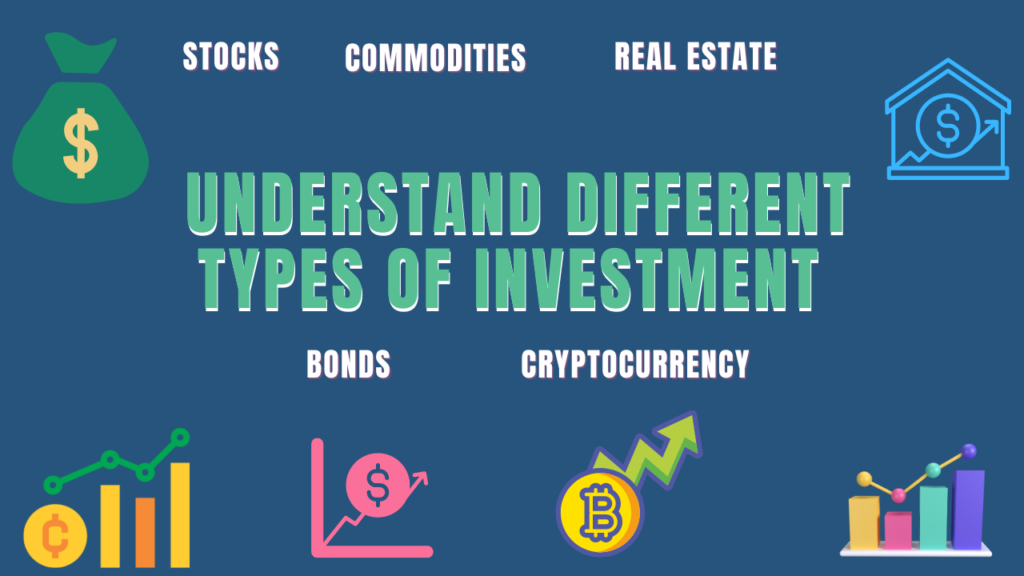An organization cannot exist without people because all organizations functions through people. So it is necessary to employ the resources of people, developing and maintaining their skills, knowledge, talents and compensating them according to their jobs and fulfilling the objectives of personal and organizational goals. So, Human Resource Management (HRM) is the management of various activities that are designed to enhance the effectiveness of the manpower in an organization in the achievement of organizational goals.
Definition of HRM
Human Resource Management (HRM) can be defined as the functions of planning for human resource needs, recruiting, selecting, developing, compensating, and evaluating human resource performance to achieve individual, organizational and social goals.
HRM is a modern approach of managing people and their relations and behaviour in the organization. Human Resource Management is concerned with the employment of all types of personnel in the organization both managerial and operatives of the organization. It brings people and organization together so that the objectives of each other can be met. All functions of a business is done for the requirements of society. Society and its environment are continuously changing. Due to this reason human resource management is a dynamic function and it never ends whatever may be the changes in the environment of the organization.
Why Human Resource Management
The success of any organization depends upon the right selection, training, and development of the staffs of the organization. Thus, competent, co-operative, and dedicated staffs are the most precious asset of an organization. There are many reasons why HRM is important for an organization:
1. Placing the right person at the right Job: Human resource management ensures higher performance by placing right person on the right job through proper recruitment and selection. Employees are given a place according to their qualifications.
2. Fulfilment of enterprise objectives: The staffs of the organization plays an important role in fulfilling the objectives of the organization. Without competent staff the different activities of the organization cannot be performed properly. Proper manpower planning must be adopted for appointing different categories staffs at different levels of management which helps to fulfil the objectives of the enterprise.
3. Assists other managerial functions: Human resource management assists other managerial functions because without competent personnel the functions of management like planning, organising, directing and controlling cannot be performed properly. So, the effectiveness of other managerial functions depends to a great extent on the effectiveness of the human resource management functions.
4. Reduces cost of production: Human resource management helps in appointing the right personnel in the right position at the right time. This personnel makes no wastage or mistakes during the production of products which assists in the reduction of cost of production.
5. Long-term Growth of Enterprise: The continuous survival and long-term growth of any enterprise depends on its efficient staffs which is ensured by human resource management functions. An organization grows with the efforts of its efficient staff only.
6. Fulfils present and future needs of employees: In any organization the present and future needs of employees can be filled up on the basis of human resource management. It gives a clear picture to the organization that in coming years how many positions will be vacant and new positions will be created. So, by appointing deserving candidates the organization can fill those vacant and new positions. Thus, it is clear that human resource management fulfilled present and future needs of employees in any organization.
7. Improves employer-employee relations: The human resource management function is very important for building a good relationship between management and employees of the organization. By applying various principles and techniques on a scientific basis human resource management helps to reduce employer-employee misunderstanding and removes industrial unrest. It also develops a strong relationship by developing mutual cooperation and trust.
Human resource management process
The HRM process includes the following basic activities:
1. Human resource planning: Human resource is the most important resource of the organization. Naturally, a plan is to be formulated for human resources for achieving the objectives of the organization. Human resource planning is the process of meeting the future demand of human resources in the organization with the supply of right number of qualified people into the right job at the right time for achieving the organizational and individual objectives. It is one kind of strategy for acquiring, utilizing, improving, and preserving human resources for securing long-term benefits for the organization.
“Human resource planning can be defined as the process of forecasting the future human resource requirements of the organization and matching the supply of the people with the demand of the people the organization expects over a given time frame. It ensures movement from the current manpower position to the desired manpower position”.
2. Recruitment: Once the current and prospective manpower requirements in terms of the number and kind of human resources required are determined, the human resource department is required to find out the sources from where the required human resources are available and encourage them apply for jobs in the organisation. This process is known as recruitment which ensures that adequate quantities of qualified human resources will be available as and when needed.
“Recruitment is the process of searching the places where required prospective candidates will be available and attracting and stimulating them to apply for jobs in the organization”.
3. Selection: Employee selection is the process that starts after identifying the sources of manpower resources, searching for prospective candidates, and stimulating them to apply for jobs in an organization. It means selecting the most suitable candidate out of a number of candidates in the right job. It is a procedure of matching organizational requirements with the skills and qualifications of people.
“Selection is the process of choosing duly qualified and skilled persons according to the organizational requirements of the job”.
4. Training and development: Training means increasing the technical knowledge and operating skills of the employees to perform the jobs. Training helps to adjust the employees with the jobs and can expectedly perform the jobs. It is a systematic, organized and learning process through which the trainees acquire new skills, technical knowledge, and problem-solving ability and change their behaviour and attitude towards the organization and the requirements of the jobs. Training improves the current performance of the employees on present jobs and prepares them for taking up new assignments in the future.
“Development refers to the overall personal growth of the executives and focuses on improving the skills and efficiency in their present jobs and also building capacity for future managerial tasks. An organization works for the development of its executives or potential executives in order to enable them to be more effective in performing various managerial functions”.
5. Performance appraisal: It involves evaluating the performance of the employees in terms of the requirements of the job for which he is employed.
6. Compensation: It involves providing adequate, equitable, and fair remuneration to the employees of the organization.
Functions of Human Resource Management
The functions of human resource management can be divided into two categories, viz, 1)Managerial Functions and 2)Operative Functions.
1) Managerial Functions:
Managing the employees of the organization is the main function of a manager. The other functions of a human resource manager include the following:
Planning: Planning means human resource planning in terms of requirements of man power, recruitment, selection, training etc. It also includes forecasting man power needs and formulating policies, programs and preparing budgets relating to human
resources of the organization.
Organising: A sound organization structure is required for implementing the human resource planning. For this purpose the tasks are to be allocated among the members of the organization and the authority-responsibility relationships are to be
defined properly for implementing the human resource planning and achieving the objectives of the organization.
Directing: For executing the plans of the organization a manager is required to motivate, command, lead, supervise and activate people of the organization. Only on the basis of proper directing function the willing and effective co-operation of the employees can be obtained and the objectives of the organization can be achieved.
Controlling: It means comparing the actual performance with the plans to verify whether the various activities are performed in conformity with the plans adopted and the directions of the organization. On the basis of this comparison deviations are identified and the remedial actions are prescribed. The controlling functions also involves auditing training programmes, analysing labour turnover records, directing morale surveys, conducting separate interviews and other means for controlling the activities of human resource managements and making it highly effective.
2) Operative Functions
Operative functions of human resource management is related to specific activities like acquisition function, development function, compensation function, integration function and maintenance function.
Acquisition/Procurement Function:
It means securing and employing the right kind and the right number of people in the 0rganization achieving the objectives of
the organization. It covers the following activities:
(1) Job Analysis: It is the process Of collecting and studying in detail the operations and responsibilities involved in a job.
(2) Human Resource Planning: It is essentially the process of estimating the future human resource requirements of the organization based ono the present man power inventory which assures that the organization will get the right kind of person at
the right time for performing the jobs of the organization and achieving the objectives of the organization.
(3) Recruitment: Recruitment is the process of searching prospective employees and stimulates them to apply for jobs in the organisation.
(4) Placement: the person considered most capable on the basis of recruitment and selection is placed on the job after giving the letter of appointment. After placing the new employee in the job his orientation is necessary.
(5) Induction or Orientation: Orientation or induction means introducing the new employee the organisation and its mission, philosophy, objectives, rules and regulations, procedures, product lines, key functionaries, promotion avenues, training, retirement benefits, remunerations job duties, reporting time in the job and other benefits.
Development Function:
Development human resource is the process of improving the skills, knowledge, value, creative abilities, aptitude, commitment etc. so that employees can perform their present and future jobs more fulfilling the requirement of the organization it includes the following activities:
(1) Performance Appraisal: Performance appraisal of employees means evaluating the performance of individual employee on their jobs and the potential for development.
(2) Training: it means increasing the technical knowledge and operating skills of the employee to perform the job.
(3) Executive Development: it is the process of conducting and developing suitable executive programmes for developing managerial talents.
(4) Career Planning and development: it involves planning the career of employees and implementing of career plans by means of educating, training, job search, transfer, promotion and demotion.
Compensation Function:
Compensation means determining fair, adequate and equitable remuneration for the employee of the organization for their contribution in the achievement of the organizational goal. it is considered as the most important motivating factor for all employees.
Integration Function:
In the integration function the goals of the employees and the organization are reconciled and it includes a number of functions like motivating the employees, handling their grievances, collective bargaining, worker’s participation in management, conflict resolution, improving quality of work life etc.
Maintenance Function:
The maintenance function is concerned with providing those working conditions that employees believe to be necessary in order to maintain their commitment to the organization, The maintenance function includes protecting and promotion the physical and mental health of the employees of the organization. For this purpose social security benefits like provident fund, pension fund and fringe benefits like housing, medical aid, education facilities, conveyance facilities are provided to the employees of the organization.










